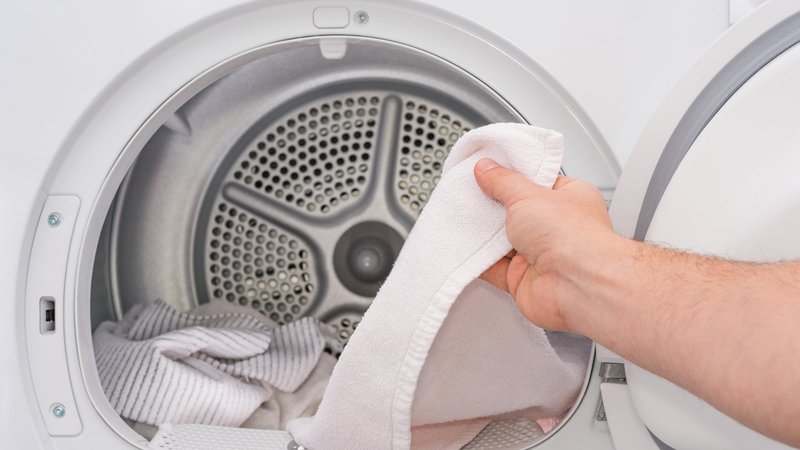
Error codes like F1 are your dryer’s way of communicating with you. Think of it as its SOS call – it’s trying to tell you something isn’t quite right. The F1 error code typically signals a problem with the dryer’s temperature sensor. This sensor keeps track of how hot or cool your dryer is getting, which is crucial for making sure your clothes don’t come out damp or charred. It’s a bit like how you’d adjust the heat when cooking; too little, and your food is raw, too much, and it’s a charred mess.
Understanding the F1 Error Code
So, what exactly is happening under the hood when you see this F1 error code blinking at you? Well, imagine you’re driving a car and suddenly, the check engine light turns on. You might not know what’s wrong immediately, but you know it needs attention. The F1 error is similar; it’s indicating that something with the dryer’s internal temperature sensor has gone awry.
Temperature sensors in dryers are crucial because they monitor the heat levels inside the machine. For an LG dryer, the F1 error means the control panel is receiving abnormal signals from the temperature sensor. This could be due to a sensor malfunction or an issue with the control board itself. It’s like if your thermostat at home is broken – it might tell you your house is 70 degrees when it’s actually sweltering at 85.
Once you understand what the F1 code signifies, the immediate reaction might be to reset the dryer in hopes of clearing the error. Resetting the dryer usually involves unplugging the device, waiting for a brief period (about 10 minutes), and then plugging it back in. This simple process can sometimes clear the error message if it was merely a fluke or caused by a temporary glitch. In many cases, this quick fix can save you from deeper, techier troubleshooting.
Steps to Reset Your LG Dryer
Resetting your LG dryer is not just about flipping a switch. It’s a bit of a process, but don’t worry – it’s simpler than it sounds. Think of it like rebooting your computer when it freezes; a reset can often clear out minor hiccups. Here’s how you can perform a reset on your LG dryer:
First, ensure your dryer is empty. You don’t want wet clothes sitting in there while you work. Then, unplug the dryer from the power outlet. This step is crucial because it cuts off any electrical flow, allowing the machine to fully “power down.” Wait for about 10 minutes to give the dryer time to reset its system. This pause is like giving your dryer a chance to “catch its breath.”
After the wait, plug the dryer back into the wall socket. You’ll notice all the lights on the control panel blink briefly as it powers up. Try running a quick cycle without any clothing to see if the F1 error reappears. Much like testing a gadget after a restart, this helps determine if the reset has fixed the issue. If the F1 code is gone, great! If it persists, we may need to dig a bit deeper.
When Resetting Isn’t Enough
So, you’ve reset your dryer, and the pesky F1 error still lights up like a Christmas tree. Now what? Don’t panic! Sometimes, the problem needs more than just a reset, akin to needing a mechanic when your car won’t start even after checking the basics. The next step involves taking a closer look at the temperature sensor or the control board.
First, see if there’s anything obstructing the sensor. Lint buildup or a misplaced item can sometimes interfere with its readings. Cleaning out the lint filter and ensuring the vent is clear can often resolve minor sensor issues. If the sensor seems clear but the error persists, the issue could be more technical, possibly involving the control board.
At this stage, considering professional help is a good idea. Attempting to fix complex electrical components by yourself can be risky and might even void warranties. A certified technician can diagnose whether the sensor needs replacing or if there’s a deeper issue with the control board. It’s like calling in an electrician when your wiring is wonky – sometimes, expert eyes are what’s needed.
Preventing Future Error Codes
No one enjoys a visit from the error code monster, so let’s explore how you can keep it at bay. Maintaining a dryer is much like maintaining a car; regular care can prevent many problems down the road. Simple steps can help avoid the frequent appearance of that dreaded F1 code.
Regular cleaning of the lint filter is vital. Lint buildup not only poses a fire hazard but can also affect the temperature sensor’s accuracy. Make it a habit to clear the lint filter after every load. Additionally, ensure that the dryer vent is not obstructed. An easy way to remember this is to give your dryer a “health check” every month, ensuring air can flow freely.
Another tip is to avoid overloading your dryer. Just like stuffing too many clothes into a suitcase can damage the zipper, overloading can strain the dryer’s components, leading to errors. Always follow the recommended load size to keep everything running smoothly. By taking these simple preventive measures, you can reduce the chance of running into the F1 code and extend the life of your dryer.
In conclusion, while resetting your LG dryer might solve the F1 error in some cases, it’s not always the ultimate solution. Understanding the role of the temperature sensor and regular maintenance can make a significant difference. If resetting doesn’t work, don’t shy away from seeking professional help. After all, keeping your dryer working smoothly is worth the effort and ensures you’re never left with damp clothes on laundry day!